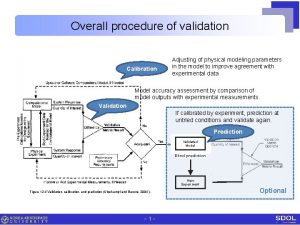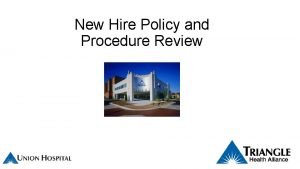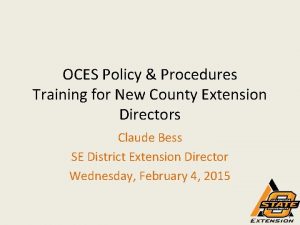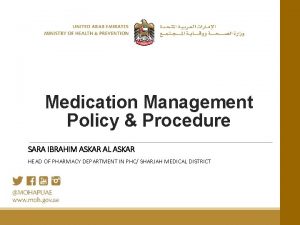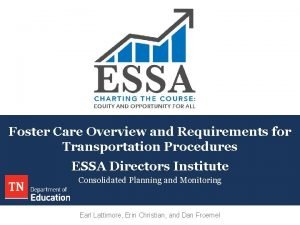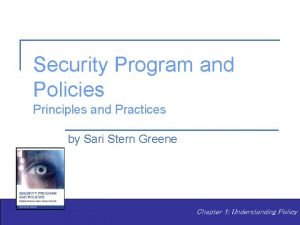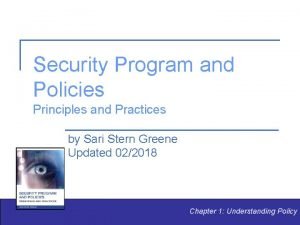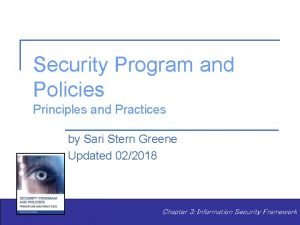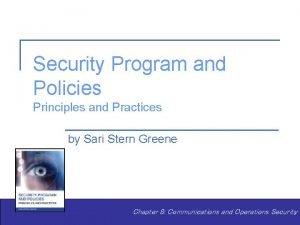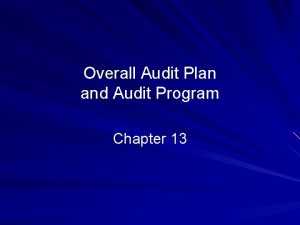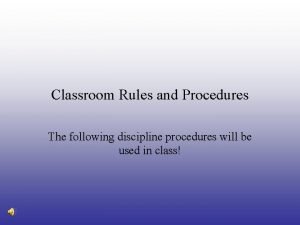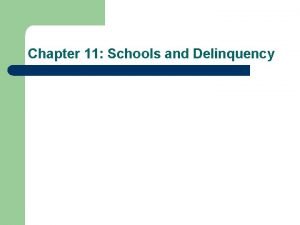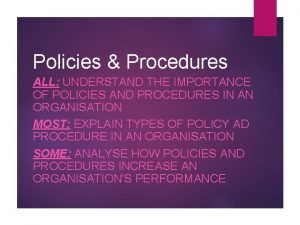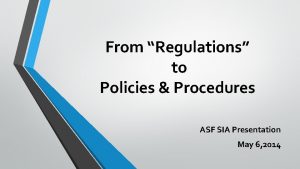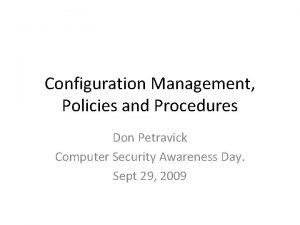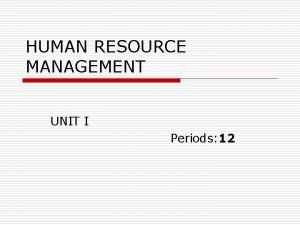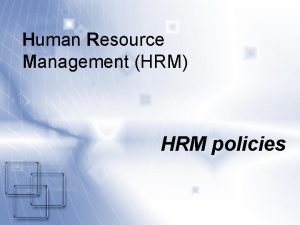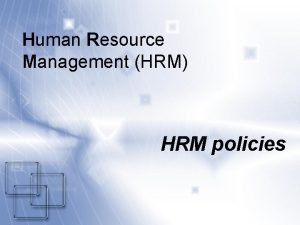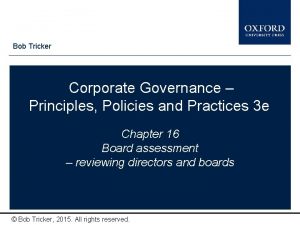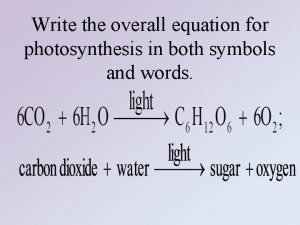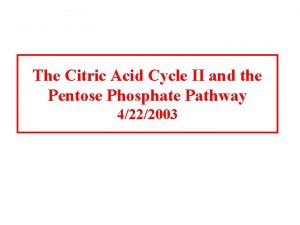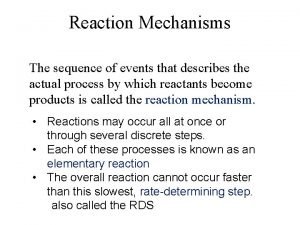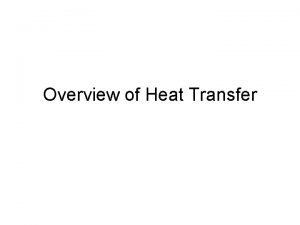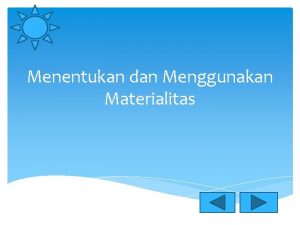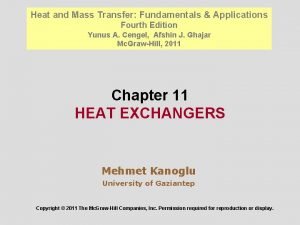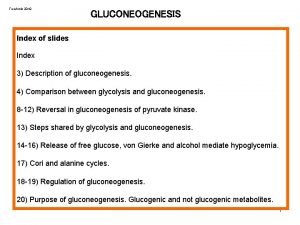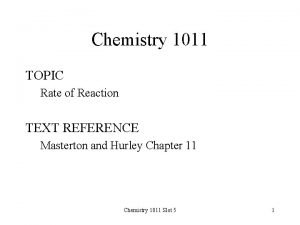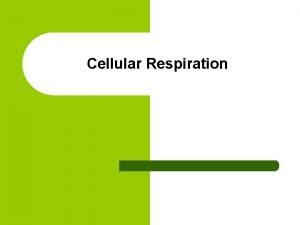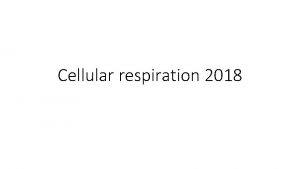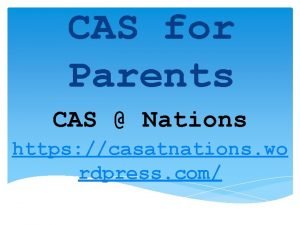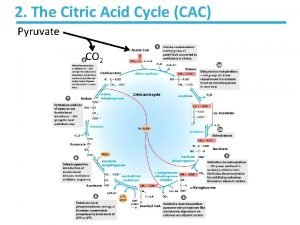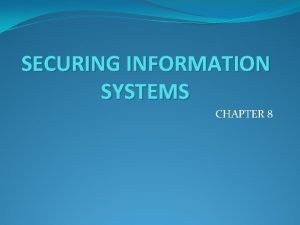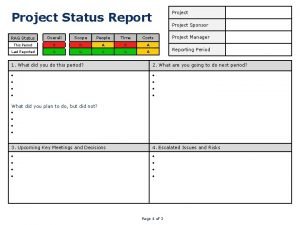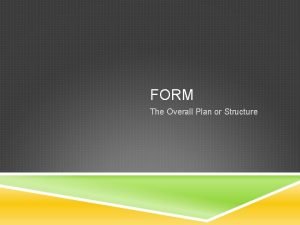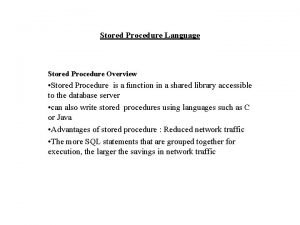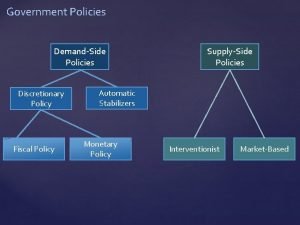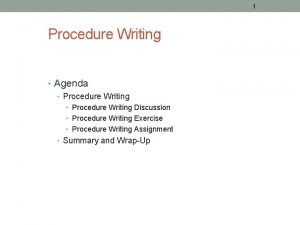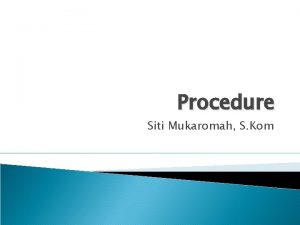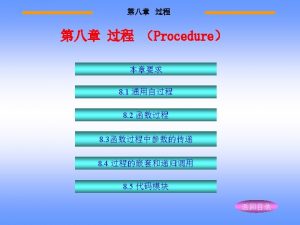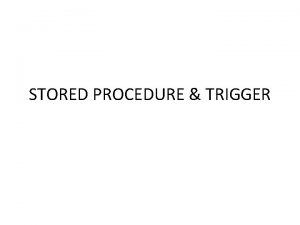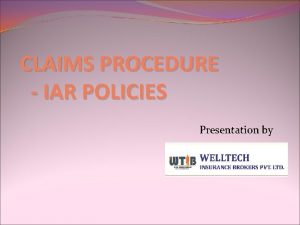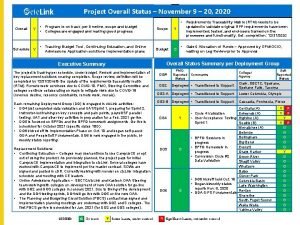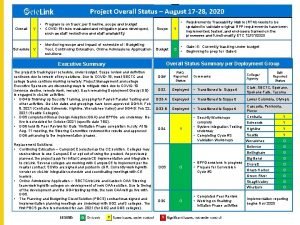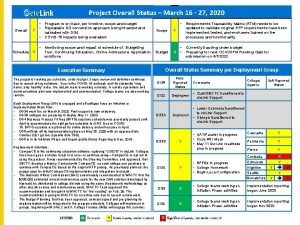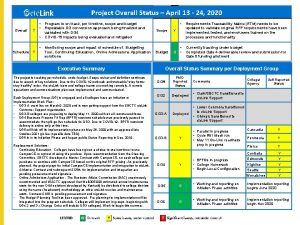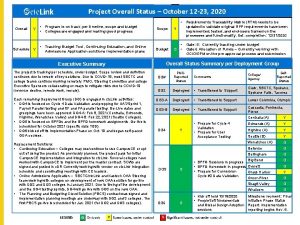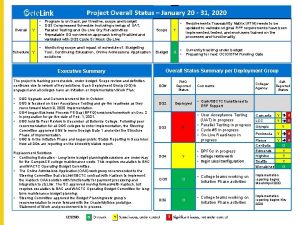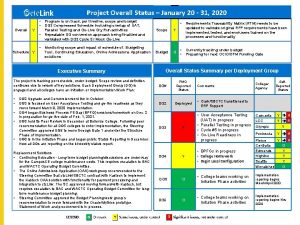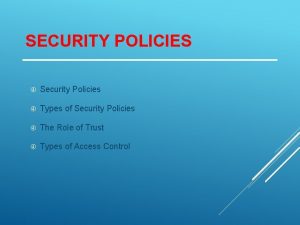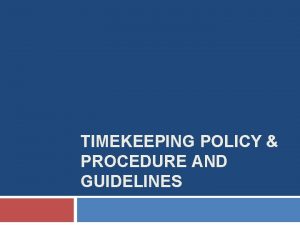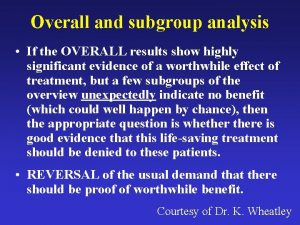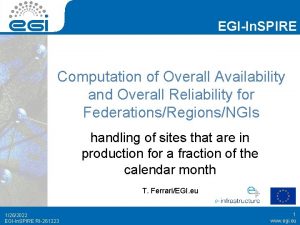2020 REMSA Policies and Procedure Overview Overall Policy































































![Resuscitate? Does it matter that there was bystander CPR? [No] Traumatic Arrest Review Resuscitate? Does it matter that there was bystander CPR? [No] Traumatic Arrest Review](https://slidetodoc.com/presentation_image_h2/4d3b101cce0b1efb96b3f5439927eef5/image-64.jpg)


- Slides: 66

2020 REMSA Policies and Procedure Overview Overall Policy Changes Spring 2020 Misty Plumley, Senior EMS Specialist 2020 J 31 V 4

Identify and review policy changes for 2020 Discuss performance standard updates Discuss CQI Review findings via Case Reviews Objectives Review best practices for documentation of clinical care Demonstration data entry strategies to best capture documentation of: Fluid bolus administration Ketamine administration TXA administration

Policy Changes – Section 1000 EMS Personnel REMSA 2020 Policy and Procedure Manual Overview

REMSA 1101 EMD Training No changes to EMD Training for this cycle of changes. Changes made with EMD task force for dependent REMSA 2101.

REMSA 1102 EMT Training No changes proposed for Spring 2020.

Paramedic Training: REMSA 1103 No changes proposed for Spring 2020. Title 22, Division 9, Chapter 4 Paramedic Regulations anticipated new release and update for April 2020. This will bring changes to paramedic training curricula. More information when regulations are finalized.

Public Safety Personnel First Aid and CPR Training REMSA 1104 No current changes for 2020 Law enforcement partners continue to evaluate programs for use/deployment of naloxone. REMSA developed and published a Naloxone Utilization Reporting Form (in REMSA P&P Manual as REMSA Law Enforcement Use of Naloxone Report)

REMSA 1201 Fee Schedule is under review and discussions for change occurring with stakeholder groups, anticipated changes.

EMT Recertification No proposed changes for Spring 2020. Reminder for 1 st recertification after July 1, 2019: REMSA 1203 All EMT’s recertifying must show documentation to support the cognitive and psychomotor training for: Epinephrine Naloxone Glucometer The BLS SCV form must be completely filled out Including item #9

REMSA 1207 Paramedic Accreditation No changes proposed for Spring 2020. Preview for possible changes in Fall 2020 as the Title 22, Division 9, Chapter 4 Paramedic Regulations are anticipated to be finalized in early 2020.

REMSA 1208 Paramedic Reverification No changes proposed for Spring 2020. Preview for possible changes in Fall 2020 as the Title 22, Division 9, Chapter 4 Paramedic Regulations are anticipated to be finalized in early 2020.

MICN Reauthorization Changes made to reflect new reauthorization requirements: Applicants must upload their CE certificates with their application. CE certificates must meet BRN requirements Many nationally recognized courses qualify for EMS CE. REMSA 1210 Questions should be directed to hospital PLN.

Remsa 1210* changes continued Clarification of EMS CE requirements with less than 24 months initial authorization.

Skills Competency Verification No changes proposed for Spring 2020. Reminder from Spring 2019: REMSA 1302 Changes to the ALS SCV process to update the form for childbirth/neonatal resuscitation. All new ALS SCV courses should utilize the updated ALS SCV form, and childbirth & neonatal resuscitation be integrated into pediatric simulation or pediatric resuscitation classes offered by REMSA providers. REMSA requires that all paramedics have completed the updated ALS SCV process no later than April 1, 2020.

Policy Changes – Section 2000 Communications REMSA 2020 Policy and Procedure Manual Overview

Emergency Medical Dispatch Changes to EMD cards and LEMSA controlled items occurring as needed. Policy Changes made by the EQRT for continuity of EMD CQI and data collection REMSA 2101

Policy Changes – Section 3000 Prehospital Services REMSA 2020 Policy and Procedure Manual Overview

Drug and Equipment List REMSA 3301 BLS First Response Battery operated suction moved to optional. BLS First Response Manual suction moved to mandatory. Broselow tape replaced with Length Based Resuscitation Tape* *Length Based Tape must be nationally standardized and commercially available. REMSA calculation chart dosages remain precedence.

REMSA 3302 Controlled Substances Intranasal Ketamine added to REMSA P&P All ALS agencies must be stocking ketamine by April 1, 2020

Intranasal Naloxone Use by Public Safety Personnel REMSA 3309 No Current Changes Proposed for 2020 Added Law Enforcement Use of Naloxone Reporting Form as data collection tool for LE agencies as needed.

Policy Changes – Section 4000 Treatment Protocols REMSA 2020 Policy and Procedure Manual Overview

Introduction to Treatment Protocols No changes proposed for Spring 2020. Implications for agencies applying for waiver of AHA training. REMSA 4101

Universal Patient Protocol: Removed Suspected Stroke from list of patient types requiring mandatory base contact. EMS Providers should actively assess for suspected stroke, and when suspected contact the closest Stroke Receiving Center (PSC). REMSA 4102 Notification should occur prior to transport Patients should be transported to the closest, most appropriate Stroke Receiving Center.

Removal of Broselow Tape reference, changed to Length Based Tape Applies to Base Hospital Notification and Prehospital Receiving Center Notification Applies to other dependent policies (i. e. REMSA 4103) REMSA 4102

Removal of reference to STEMI BH STEMI base hospital removed from all dependent policies REMSA 4102 Clarification of protocol verbiage that capnography should be placed prior to any advanced airway procedure.

2020 Spring REMSA 4102 2019 REMSA P&P

Calculation Chart Broselow Tape changed to Length Based Resuscitation Tape* *LBT must be nationally standardized and commercially available Amiodarone for VT w/ pulses added Ketamine Intranasal Doses Added – 0. 5 mg/kg for adult patients REMSA 4103 Max single dose of 30 mg, repeat once standing order Magnesium Sulfate clarified to be available for pre-eclampsia or eclampsia Midazolam IN dosage increased to same as IM dose, as data review revealed that prior intranasal dosage was frequently repeated. CDC medication cache updated with new add of midazolam/Seizalam

REMSA 4103


REMSA 4103 New addition to CDC Chem Pack medications. Used in the event that the CDC cache is deployed in a disaster management situation. Addition of midazolam/Brand Name Siezalam

Do Not Attempt Resuscitation No Changes proposed for Spring 2020. REMSA 4203 Reminder: Fall 2019 added in verbiage to Determine Death in penetrating trauma arrest

Ambulance Patient Offload Delay REMSA 4204 No Current Changes Proposed for 2020 Continued emphasis remains on triaging patients to appropriate care areas Limiting non-essential ALS treatments Strategy remains: When ED’s are heavily impacted, patients meeting specific BLS criteria can be placed in triage/waiting room

REMSA 4301 Shock Due to Trauma TXA inclusion criteria review along with REMSA 4302.

Tranexamic acid (TXA) Inclusion criteria (Any ONE of the following): REMSA 4302 Traumatic Injuries Signs and symptoms of hemorrhagic shock from significant blood loss with a SBP < 90 Significant hemorrhage with persistent tachycardia at 120 or greater. Uncontrolled hemorrhage despite tourniquet use Pain Management Addition of intranasal ketamine as available route Removal of language limiting opiates to isolated extremity trauma Reminder: patient weight is required to dose ketamine, weight selected and dose administered must correlate

TXA Review Case #1: Should this patient get TXA? Case #2: Should this patient get TXA? 9 -1 -1 response for 78 year male bleeding. Pt’s family reports bleeding from the mouth (“cough” [sic] ground color) and bleeding when he has a bowel movement for 3 days. BP is 92/60, HR 118, RR, 20, skin signs: pale, cool, dry. Takes aspirin, and other list of meds. No injuries noted on assessment. 9 -1 -1 response for assault. Patient is 26 year male, with a stab wound to his left upper chest. PD arrived on scene after call for a fight to find stabbed patient, approx. 30 minutes ago. BP 70/46, HR 119, RR 22, skin signs: pale, cool, diaphoretic, lungs CBL, GCS 11. Unk med hx, medications.

TXA Review – Documentation


Fluid bolus administration or normal saline KVO should also be documented with TXA or with any other fluid admin or IV med TXA Review: Documentation

REMSA 4302 Reminder from Fall 2019 updates: Pain management medications can be combined (when clinically indicated by repeated assessment) standing order Combining medications must be supported by documentation (including weight based medications)

Burns Intranasal route added to ketamine as available option REMSA 4303

REMSA 4402 Clarification for ECG Transmission: if STEMI suspected or confirmed, ECG must be transmitted to the closest STEMI Receiving Center Removal of STEMI BH title

REMSA 4404 Symptomatic Tachycardia with Pulses Clarification for REMSA 4103 Calculation Chart dosing for amiodarone in this patient.

Cardiac Arrest Clinical data reinforces BLS strategies for resuscitation are of paramount importance and have the most impact! Reminder from Fall 2019: REMSA 4406 Traumatic arrest patients are NOT managed as medical arrest patients. Scene time should be limited in the traumatic arrest patient that is being transported Traumatic arrest patients that have a manageable airway, should be transported to the closest Trauma Center. Signs of life in a traumatic arrest: GCS > 3 Pupillary response Spontaneous movement PEA > 40 bpm

Calcium chloride administration added as standing order in specific patient type Known/suspected dialysis patient cardiac arrest REMSA 4406

Respiratory Distress Editing of inclusion criteria for application of CPAP REMSA 4408 Adult patients with non-fatal drowning who are able to maintain their own airway can qualify for CPAP application Contraindications: non-fatal drowning with unstable chest wall, or suspected head trauma as CPAP increases ICP and intrathoracic pressure Monitor closely for vomiting

Submersion incident Breath break point CPAP and nonfatal drowning hypoventilation hypercapnia Respiratory acidosis Hypoxemia

REMSA 4408

Suspected Stroke REMSA 4503 Perform the m. LAPSS and LAMS assessment scales when stroke is suspected and document findings in e. PCR. Contact closest most appropriate Stroke Receiving Center, prior to transport, for suspected stroke patients.

Nausea/Vomiting REMSA 4504 Added diphenhydramine as a BHO for nausea/vomiting. An alternative to ondansetron in patients with sensitivity or for patients who are pregnant who would choose another medication.

Pain Management Ketamine IN added Verbiage for opiate pain management clarified REMSA 4505

Ketamine Review

22 year male with suspected right femur fracture after separation of rider and bike at high speed. Weight 113. 4 kg, calculated dose 34 mg. Ketamine Review Administered dose 30 mg 95 year female patient with right hip pain, shortening/rotation s/p fall. Weight 63. 5 kg, calculated dose 19 mg. Administered dose 0. 3 mg but narrative says 16. 5 mg. 69 year male with right hand wrist pain s/p fall. Weight in kg 59. 7 kg, dose 0. 3 mg/kg, calculated dose 17. 01 mg. Administered dose 26. 5 mg

Allergies/Anaphylaxis REMSA 4601 No Current Changes Proposed for 2020

REMSA 4701 Pre-Eclampsia and Eclampsia Clarification of magnesium sulfate dosing for both pre-eclampsia and eclampsia in REMSA 4103 Calculation Chart

CQI System REMSA 7101 EMS Core Measures will be updated by CA EMSA and REMSA strategies for their implementation discussed with CQILT and other REMSA Advisory Committees through Q 1 -Q 3 2020, once released by CA EMSA. REMSA is auditing time off chest data for cardiac arrest management. Please submit data as requested. REMSA is also actively realigning specific call type CQI – LOSOP medications came first (TXA, ketamine), push dose epinephrine and others are also being added.

REMSA Performance Standards Proposed Changes Review Next

Clarified language for ECG transmission: REMSA 7401 Transmit suspected STEMI or confirmed STEMI 12 Lead ECG’s to the closest most appropriate STEMI Receiving Center. Removal of STEMI BH terminology

REMSA 7703 REMSIS Authorization and Security No Current Changes Proposed for Spring 2020

REMSA 8101 Resource List Additional address and contact information was changed as requested.

REMSA 9101 Definitions This list was updated to coincide with policies as needed.

2019 retrospective CQI Cumulative case overview: - Traumatic Arrest Review - TXA inclusion criteria review - ketamine usage and documentation audit results - Fluid Bolus documentation review

Orotracheal Intubation Update Audited 3 reports of suspected unrecognized esophageal intubation to confirm proper procedures and documentation: ZERO unrecognized esophageal intubations

estimated 65 year male patient, 3 GSW: to right chest, genitalia, and right knee. minimal bleeding or bleeding controlled to these noted wounds Staged for scene arrival first, until LE cleared scene Traumatic Arrest Case Review Find LEO doing bystander CPR Documentation: Agonal rhythm at contact, that 2 minutes later is recorded as asystole GCS 3 No spontaneous movement documented Pupillary response in left eye
![Resuscitate Does it matter that there was bystander CPR No Traumatic Arrest Review Resuscitate? Does it matter that there was bystander CPR? [No] Traumatic Arrest Review](https://slidetodoc.com/presentation_image_h2/4d3b101cce0b1efb96b3f5439927eef5/image-64.jpg)
Resuscitate? Does it matter that there was bystander CPR? [No] Traumatic Arrest Review Package and Transport? Where do we transport?

Identify and review policy changes for 2019 Objectives Discuss CQI Review findings Review applicable Performance Standards from the CQI review Review education regarding needed performance standards.

REMSA Protocol Update & CQI Case Review 2020 QUESTIONS?
 Remsa protocol
Remsa protocol Remsa protocols
Remsa protocols Overall procedure
Overall procedure New hire policy and procedure
New hire policy and procedure Lancaster county extension
Lancaster county extension Medication management policy and procedure
Medication management policy and procedure Procedure vs policy
Procedure vs policy Security program and policies principles and practices
Security program and policies principles and practices Bsbhrm506 assessment answers
Bsbhrm506 assessment answers Security program and policies principles and practices
Security program and policies principles and practices Security program and policies principles and practices
Security program and policies principles and practices Security program and policies principles and practices
Security program and policies principles and practices Security program and policies principles and practices
Security program and policies principles and practices Romeo and juliet theme analysis
Romeo and juliet theme analysis Overall audit plan
Overall audit plan Manuel roxas programs and policies
Manuel roxas programs and policies National policy and legislation
National policy and legislation Classroom policies and procedures
Classroom policies and procedures Lending policies and procedures managing credit risk
Lending policies and procedures managing credit risk Trade and investment policies
Trade and investment policies Accounting concepts
Accounting concepts Chapter 11 school policies and their functions
Chapter 11 school policies and their functions Importance of policy
Importance of policy Policies and procedures presentation
Policies and procedures presentation Configuration policies and procedures
Configuration policies and procedures Hr policies
Hr policies Hr policies
Hr policies Hrm policy
Hrm policy How did mughal attitudes and policies toward
How did mughal attitudes and policies toward Conservative policies under reagan and bush
Conservative policies under reagan and bush Chapter 6 supply demand and government policies
Chapter 6 supply demand and government policies Tricker corporate governance
Tricker corporate governance Word equation for photosynthesis
Word equation for photosynthesis Purpose of discussion
Purpose of discussion Citric acid cycle overall reaction
Citric acid cycle overall reaction Testing overall ability
Testing overall ability At the instant shown the length of the boom ab
At the instant shown the length of the boom ab Overall rate law of a reaction
Overall rate law of a reaction Heat transfer overview
Heat transfer overview Perbedaan overall materiality dan performance materiality
Perbedaan overall materiality dan performance materiality Bulk temperature formula
Bulk temperature formula The overall heat transfer coefficient
The overall heat transfer coefficient Glycolysis overall reaction
Glycolysis overall reaction The overall reaction in a commercial heat pack
The overall reaction in a commercial heat pack Overall rate law of a reaction
Overall rate law of a reaction Keeping the company on track and making sure goals are met
Keeping the company on track and making sure goals are met Objectives of strategic planning in retailing
Objectives of strategic planning in retailing Gumshoe research example
Gumshoe research example What is an overall state of well-being or total health
What is an overall state of well-being or total health Overall reaction of cellular respiration
Overall reaction of cellular respiration Does fermentation occur in the mitochondria
Does fermentation occur in the mitochondria Overall cas progress
Overall cas progress Overall cas progress
Overall cas progress Citric acid cycle overall reaction
Citric acid cycle overall reaction Glycolysis overall reaction
Glycolysis overall reaction Overall message
Overall message Securing information systems
Securing information systems Status rag
Status rag Is tonight from west side story wide or narrow
Is tonight from west side story wide or narrow How to calculate performance materiality
How to calculate performance materiality Overall force acting on an object
Overall force acting on an object Overall compositie
Overall compositie The goal of science is to
The goal of science is to Project overall status
Project overall status Overall equipment effectiveness
Overall equipment effectiveness Literary mood words
Literary mood words The overall plan or structure of music
The overall plan or structure of music


